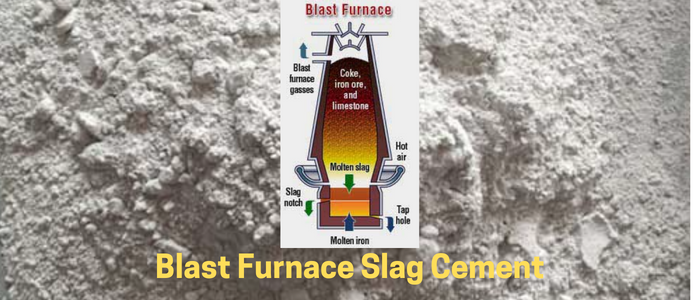Blast Furnace Slag Cement
Concrete
Concrete is the most commonly used construction materials in the world due to its strength, affordability, durability, and flexibility.
Concrete is defined as:
an artificial stone-like mass and a composite material that is made of cement paste that holds the aggregate particles together.
So, concrete is made of cement paste + aggregates. The cement paste is made from cement and water. The aggregates are divided in to fine (such as sand) and coarse (such as gravel and crushed stone) aggregates.
Thus, concrete is cement + water + fine aggregate + coarse aggregate
In some cases, we need to add admixtures to the previous components to give additional features to concrete such as higher strength, higher workability and so on.
All is good so far. so what is Blast Furnace Slag Cement? I will first tell you the problem with normal cement so that you can understand the benefits of slag cement.
Problem of Cement
The cement industry is responsible for about 8% of global carbon dioxide emissions, more than double those from flying or shipping. If it were a country its yearly pollution would only be topped by the US and China.
Yet every year, more than 4 billion tons of cement are manufactured for use in the construction of homes, roads, flood barriers, and other things. Its use is anticipated to increase as more people from developing nations relocate to urban areas and want housing and infrastructure that are on par with those in wealthier regions of the world. In only the few years from 2011 to 2013, China, which produces more than half of the world’s cement, poured more than the US did for the whole of the 20th century.
According to Johanna Lehne, an expert in decarbonizing industrial processes at climate think tank E3G in Brussels, “the underlying challenge is that [concrete] is highly carbon intensive, it is a serious concern, yet we probably will continue to use more of it.”
A Solution?
Research was then directed to find other materials that can be implemented in concrete other than cement, while at the same time, does not compromise the properties of concrete.
One of these materials is the “blast furnace slag” to produce what we call “blast furnace slag cement“.
So, what happens is you reduce the amount of cement; instead of using 100% cement, now we can use less amounts.
What is blast furnace slag cement?
Blast furnace slag cement is basically a mix between the normal cement (ordinary Portland cement) and a percentage of the blast furnace slag.
Slag cement = % of normal cement + % of blast furnace slag
Blast furnace slag (also called fine granulated blast furnace slag [GGBFS]) is one of the supplementary cementitious materials and it is a by-product from the steel industry.
Next, we will talk about the manufacture process of slag and what percentage to be added to the portland cement and a lot more.
Production of blast furnace slag cement
Ground granulated blast furnace slag is the glassy material formed from molten slag produced in blast furnaces as an industrial by-product from the production of iron used in steelmaking. As shown in the following figure, molten slag is collected and to transform the molten slag into a cementing material, it must be rapidly cooled (granulated), dried, and then ground to a fine powder. The resulting product is known as ground granulated (iron) blast furnace slag.
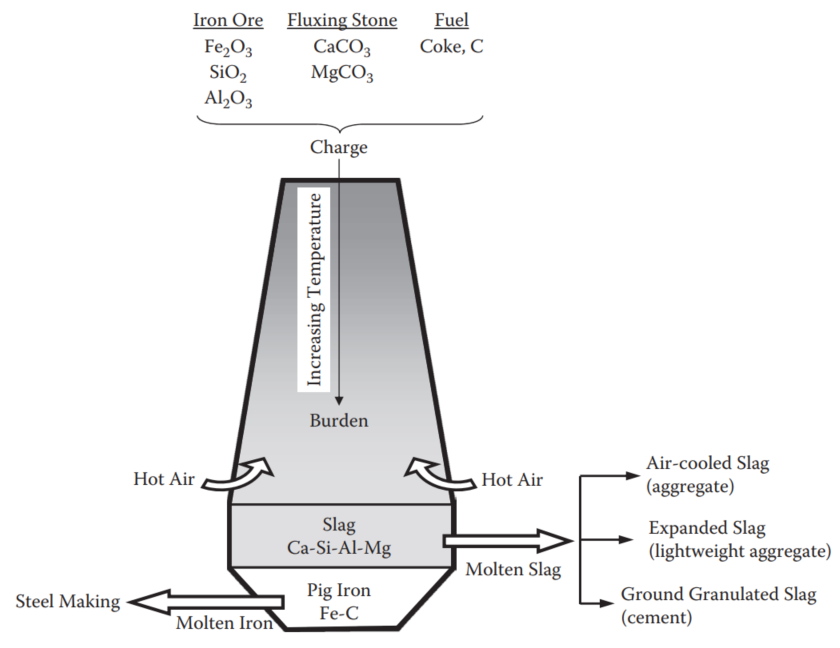
The previous description was to produce the Ground granulated blast furnace slag so how can we produce the blast furnace slag cement.
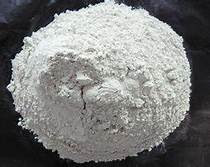
Just mix the ordinary cement with a proportion of blast furnace slag.
Proportion of blast furnace slag
The amount of slag that you add to portland cement depends greatly on the application type. Each application will require a certain proportion according to the following table:
| Application Type | blast furnace Slag % |
| General type of construction such as buildings and roads | 25 to 40 |
| Less heat of hydration such as in case of mass concrete | 30 to 50 |
| Concrete elements subjected to chloride attack | 25 to 50 |
| Concrete elements subjected to sulfate attack | 30 to 50 |
The previous proportions are for guidance only. You should do trial batches to make sure you are getting the properties that you want.
By the way, what makes blast furnace slag good for use as a cement replacement? the answer is the composition.
Composition of blast furnace slag
| Oxide | Range (%) |
| SiO2 | 32-42 |
| Al2O3 | 7-16 |
| CaO | 32-45 |
| MgO | 5-15 |
| S | 0.7-2.2 |
| Fe2O3 | 0.1-1.5 |
| MnO | 0.2-1.0 |
Example properties of Blast-Furnace Slag Cement
| Property | Value |
| Density (g/cm3) | 3.05 |
| Specific Surface Area (cm2/g) | 4000 |
| Setting Time | |
| Initial Setting | 58 minutes |
| Final Setting | 610 minutes |
| Compressive Strength (MPa) | |
| 3 days | 23.0 |
| 7 days | 36.5 |
| 28 days | 60.7 |
Applications of Blast Furnace Slag Cement
There are numerous applications and uses for the slag cement such as:
- Produces concretes with higher strength
- Produces concrete with lower permeability which make it suitable for locations vulnerable to chloride and sulfate attacks; for example, piles and marine structures.
- Makes concrete with lower heat of hydration; thus, it is a good choice for mass concrete such as dams.
- Good choice for earth and water retaining structures such as retaining walls and tunnels.
- Concrete producers like using slag since it is less costly than regular cement.
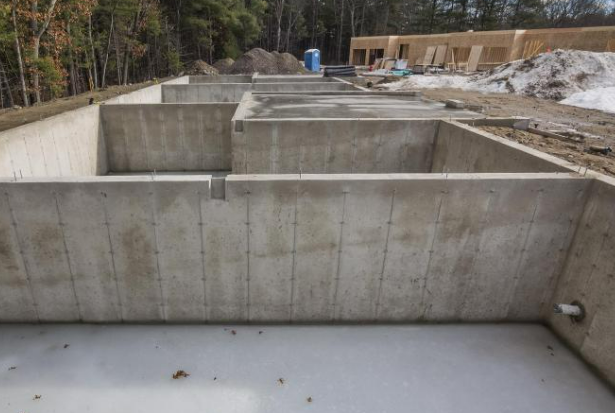
Benefits and Advantages of Blast Furnace Slag Cement
- The initial strength achieved is less than the conventional concrete, but the superior ultimate strength attained is equivalent and sometimes higher than conventional concrete.
- As the slag is finely grounded, it has the valence to fill the pores efficiently, workability is high and bleeding is low.
- It has good persistence towards sulfate and chloride assault and even less risk of alkali-silica response with aggregates.
- Because of the deliberate hydration procedure, the slump retention and initial setting time are further.
- Greater persistence and reduced penetrance due to fineness.
- Due to the white color of GGBFS, the cement color obtained is brighter colored when compared to conventional cement.
- The production cost of this cement is less than the Ordinary Portland Cement (OPC).
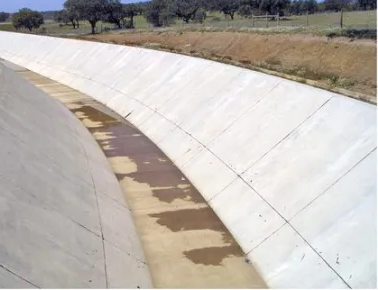
Limitation and Disadvantages of Blast-Furnace Slag Cement
- Some types of slag has a slow rate of early strength gain, which makes these types unsuitable for saturations where high early strength is required such as repair works.
Read Also:
